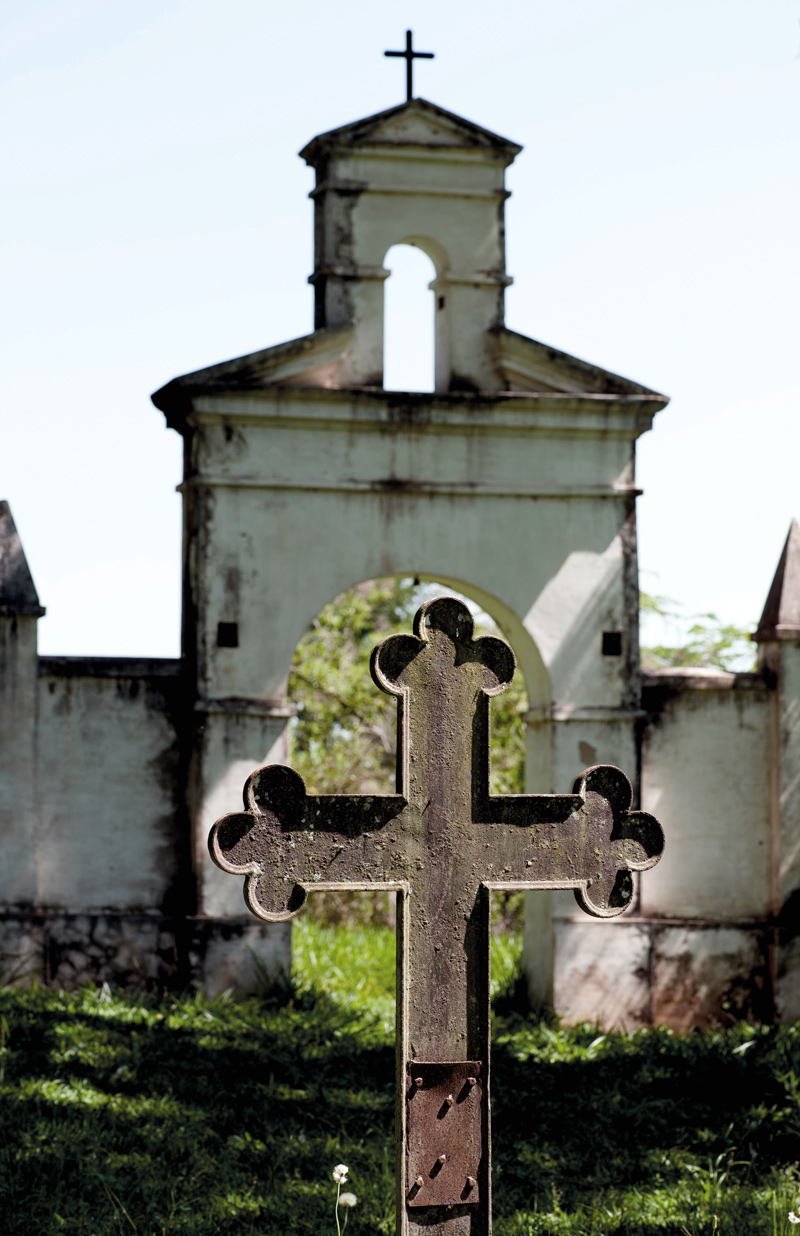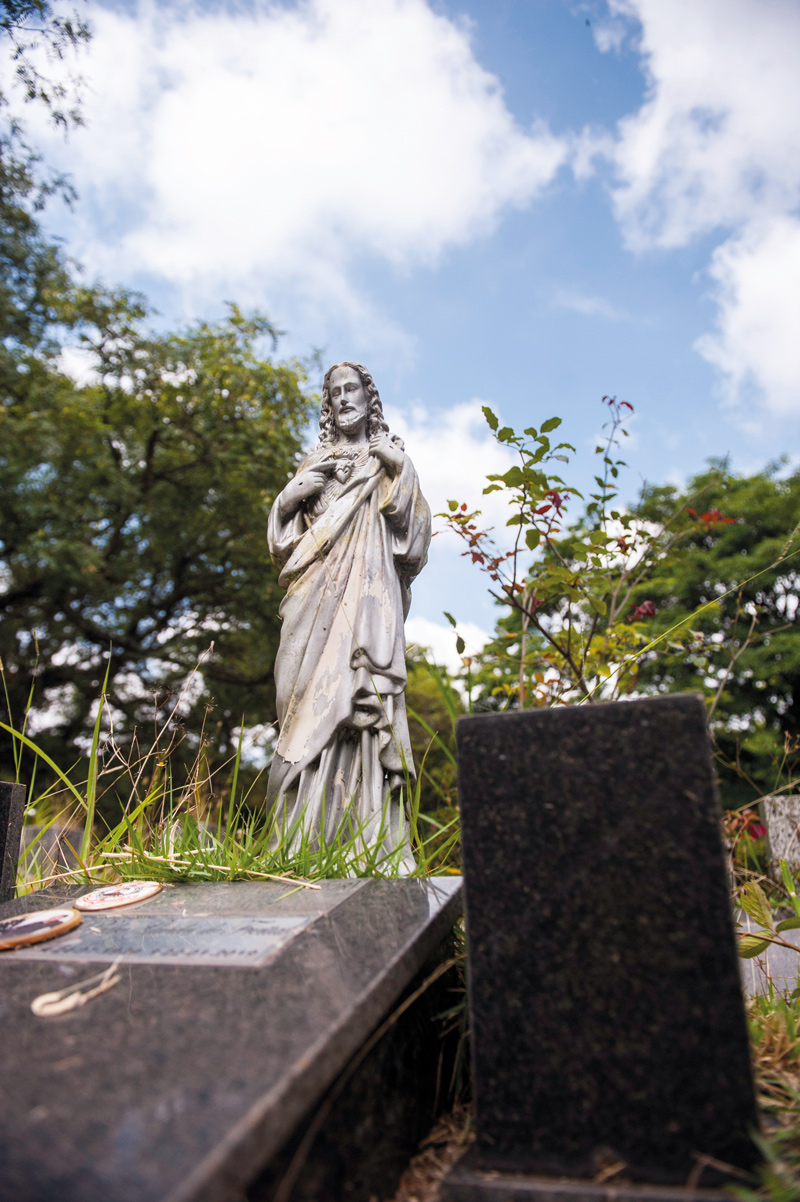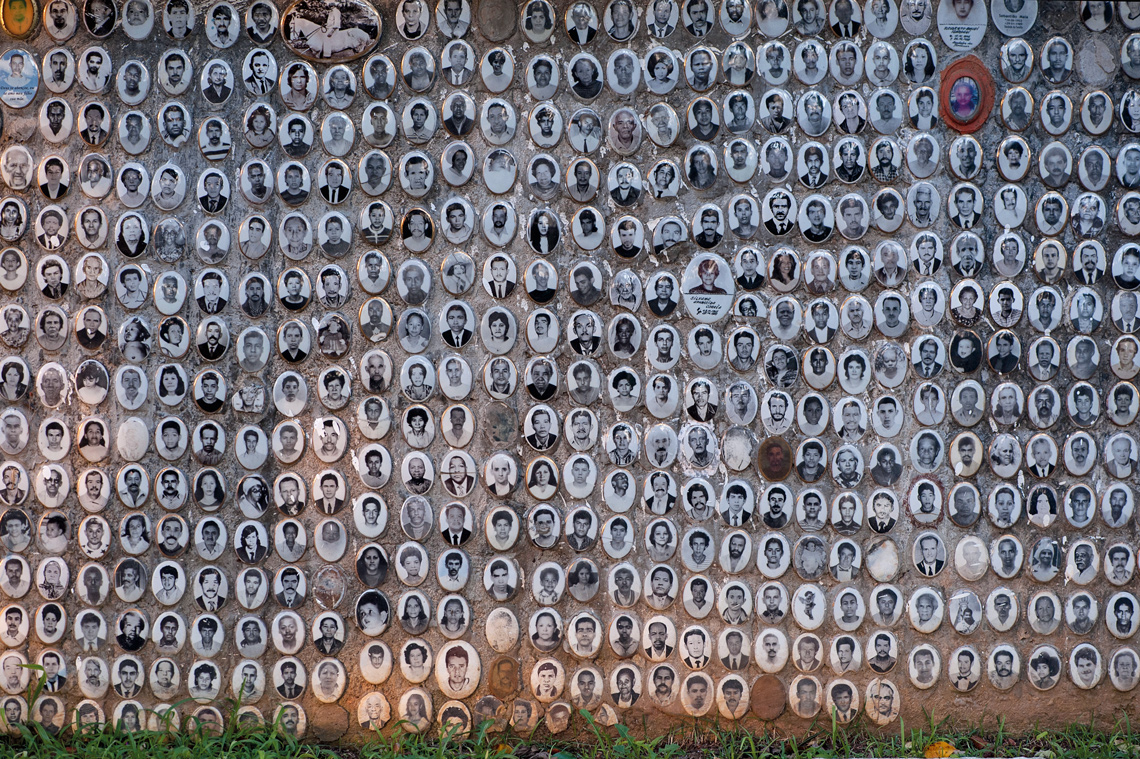The obituaries page in The New York Times, published since 1851, launched a virtual memorial in 2020 titled “Those We’ve Lost” to honor those who died from Covid-19. Among them is the actor-comedian from Rio de Janeiro, Paulo Gustavo (1978–2021), who the newspaper named one of Brazil’s most beloved performers. Shortly before falling ill Gustavo was quoted as saying that laughing was “a beautiful act of resistance,” writes historian Mariana Antão de Carvalho Rosa, from the State Institute of Education, Science, and Technology of Maranhão (IEMA), in a section on obituaries in the recently released Guia didático e histórico de verbetes sobre a morte e o morrer (Didactic and historical guide on death and dying).
Edited by historians Mara Regina do Nascimento and Mauro Dillmann, the work is a collection of 62 entries on topics such as grief, funerals, and memory. “We live in a society that worships youth and the illusion that we will be eternal. We therefore have great difficulty in dealing with the finitude of life,” observes Nascimento, from the Federal University of Uberlândia (UFU). “But since death is an inescapable question for all human beings, it needs to be more openly discussed in society.”

A cross remaining from a Protestant cemetery located in an area of the Ipanema Ranch, in Iperó, in the state of São PauloLéo Ramos Chaves / Revista Pesquisa FAPESP
Published with funding from the Federal Agency for Support and Evaluation of Graduate Education (CAPES), the book is available as a free download and is geared toward primary school teachers. At the end of each entry are learning activities for the classroom. “Some studies point out that the theme of death is present in Brazilians’ daily lives in different media, such as television and social networks, but often with a sensationalist and noneducational approach,” says Dillmann, from the Federal University of Pelotas (UFPel). “Our goal for the Guide is to take this discussion into the school and start talking about death from an early age, starting in middle school, in a way that’s critical, reflective, and based in science.”
The entries were written by 39 researchers, from Brazil and Portugal, from multiple areas of study such as history, the social sciences, religion, law, and medicine. “Thanks to this variety of specialists, we not only deal with the past, as is customary among historians, but also with contemporary issues, such as euthanasia and ‘necropolitics,'” observes Nascimento. The latter refers to the concept proposed by Cameroonian philosopher Achille Mbembe in an essay published in 2003 that discusses how government policies choose who lives and who dies. For art historian Maria Elizia Borges, a professor at the Graduate Program in History at the Federal University of Goiás (UFG), death is a multidisciplinary theme. “In the case of cemeteries, for example, we can study, among other things, the history and geography of the location, the life trajectories of the families of the dead buried there, and the iconography of the tombs,” explains the researcher, who wrote the entries on “Cemetery-necropolis” and “Tombstones and epitaphs.”
Borges began investigating the theme of cemeteries during her doctoral research, which resulted in a dissertation she defended more than three decades ago at the School of Communications and Arts of the University of São Paulo (ECA-USP). She is currently honorary president of the Brazilian Association of Cemetery Studies (ABEC), an institution that she helped create in 2004 in São Paulo, which has about 70 members nationally, mostly in academia.

Tombstones at the Cemitério do Caju, in the northern section of Rio de JaneiroLéo Ramos Chaves / Revista Pesquisa FAPESP
Cemeteries have gone through several configurations throughout Western history, the researcher explains. It was during the Middle Ages, for example, with the growth of Christianity, that corpses began to be buried inside or around churches. “At the turn of the nineteenth century, cemeteries became secularized, in other words, they gradually lost the direct influence of the Catholic Church and moved away from city centers, in compliance with the hygienic concepts that were emerging at that time,” she says.
Historian Claudia Rodrigues, from the Federal University of the State of Rio de Janeiro (UNIRIO), observes that in the humanities, studies on death gained momentum during the 1960s. This movement initially began in Europe and the United States, through the work of researchers such as the French historians Philippe Ariès (1914–1984) and Michel Vovelle (1933–2018). In Brazil, one of the pioneers in this field was the Bahian educator Clarival do Prado Valladares (1918–1983), who began his research in the 1960s and published books such as Arte e sociedade nos cemitérios brasileiros (Art and society in Brazilian cemeteries) (Conselho Federal de Cultura/Departamento de Imprensa Nacional, 1972). Its two volumes deal with the subject in 1,487 pages. Rodrigues says that in the field of history, interest in this research topic has gradually increased in postgraduate courses around the country for a little over three decades, driven partly by the publication, in 1991, of the book A morte é uma festa (Death is a party) (Companhia das Letras), by historian João José Reis, from the Federal University of Bahia (UFBA). “It was the first book on the history of death published in Brazil and was based on research in Brazilian archives and European works such as those of Michel Vovelle and Philippe Ariès,” explains Rodrigues, who has been investigating the subject of death for over 30 years and wrote the Guide‘s entry on death in the Catholic religion.
In the humanities, studies on death began to gain momentum during the 1960s
Rodrigues is one of the coordinators of “Images of death: Death and dying in the Ibero-American world,” a research group at the Department of History at UNIRIO, certified by the National Council for Scientific and Technological Development (CNPq). Created in 2011, the initiative has around 50 members, including university professors and postgraduate students from countries such as Brazil, Argentina, Spain, and Colombia. In July, the group is set to present a thematic panel at the 32nd National Symposium on History of the National Association of University History Professors (ANPUH), in São Luís, Maranhão. “Our main axis is history, but we are in constant dialogue with several areas of knowledge,” says Rodrigues, who is also editor of the multidisciplinary publication Revista M. – Estudos sobre a Morte, os Mortos e o Morrer (Journal M: Studies on death, the dead, and dying). “This interdisciplinary exchange is essential for—among other reasons—expanding the inclusion of courses such as the history of death in degree programs in the healthcare field.”
This gap is very wide, at least in the field of medicine, as indicated by a survey conducted by researchers George Felipe de Moura Batista and Gustavo da Cunha Lima Freire, from the Federal University of Rio Grande do Norte (UFRN), in Natal. Their study, published in the Revista Brasileira de Bioética, in 2019, shows that only two out of the 50 universities of medicine included in a ranking by the newspaper Folha de S.Paulo offered mandatory courses focused on thanatology, the science that studies the stages of death and the grieving process.
During the nineteenth century, middle-class families hired photographers to record a last image of the dead, says historian Juliana Schmitt, professor of the visual arts course at the Federal University of Pernambuco (UFPE), in Recife. The idea was to keep the memory of their loved one alive. “The practice began in Europe in the mid-nineteenth century and sometime later arrived in Brazil,” says Schmitt, author of the entry on mortuary photography. The collection at the Museu do Ipiranga at the University of São Paulo (USP), for example, contains around 20 portraits of the dead taken by Militão Augusto de Azevedo (1837–1905), a photographer who worked in São Paulo during the nineteenth century. “However, by the early twentieth century, this type of image became infamous in Western society as something morbid and in bad taste.”

Statue of the Sacred Heart of Jesus in the cemetery of Vila Alpina, in the southeast region of São PauloLéo Ramos Chaves / Revista Pesquisa FAPESP
One of the explanations for this change, the researcher points out, is Western society’s progressive distancing regarding death. “Until the end of the nineteenth century, people mainly died at home, in the company of family, friends, and neighbors. Then death began to occur outside the domestic environment, in hospitals. And beyond that, the professionalization of funeral services, to some extent, freed families from dealing with the corpse,” Schmitt explains.
In the Guide, the researcher also wrote an entry on funeral clothing, a term that applies both to the clothes put on corpses and to those worn by mourners. In her assessment, because we flee the debate around finitude in the contemporary world, issues such as one’s final clothing are usually decided by the family and not previously by the deceased themselves. That, however, may be changing. As Schmitt writes in the Guide, one can currently observe, worldwide, movements—stemming mainly from social networks—that “encourage people to reflect on their own death and make decisions about the steps that will be taken regarding their mortal remains (including the clothes in which their dead bodies will be dressed), and make these wishes clear while they’re still alive.”
Schmitt explains that the strictness regarding mourning attire in Western society was reinforced during the nineteenth century by Queen Victoria of England (1837–1901). After the death of her husband Albert in 1861, the regent wore black clothes and accessories until the end of her life, a full 40 years later. “In this way, she spread the cult of mourning to every social class of her time. But maintaining this rite for close to two and a half years and wearing the right clothes—preferably new and following the trending fashions, as recommended by the etiquette manuals of the time—was the privilege of only the few,” says the researcher, author of Três lições da história da morte (Three lessons from the history of death). Over the course of the twentieth century, after two world wars, the rules were gradually loosened. “Today, the tradition of using the color black and wearing discreet clothing remains in the Western world, but there is no longer any obligation in that sense,” concludes Schmitt.
Books
DILLMANN, M. and NASCIMENTO, M. R. (eds.). Guia didático e histórico de verbetes sobre a morte e o morrer. Porto Alegre: Casaletras, 2022.
SCHMITT, J. Três lições da história da morte. Rio de Janeiro: Editora UFRJ, 2023.
